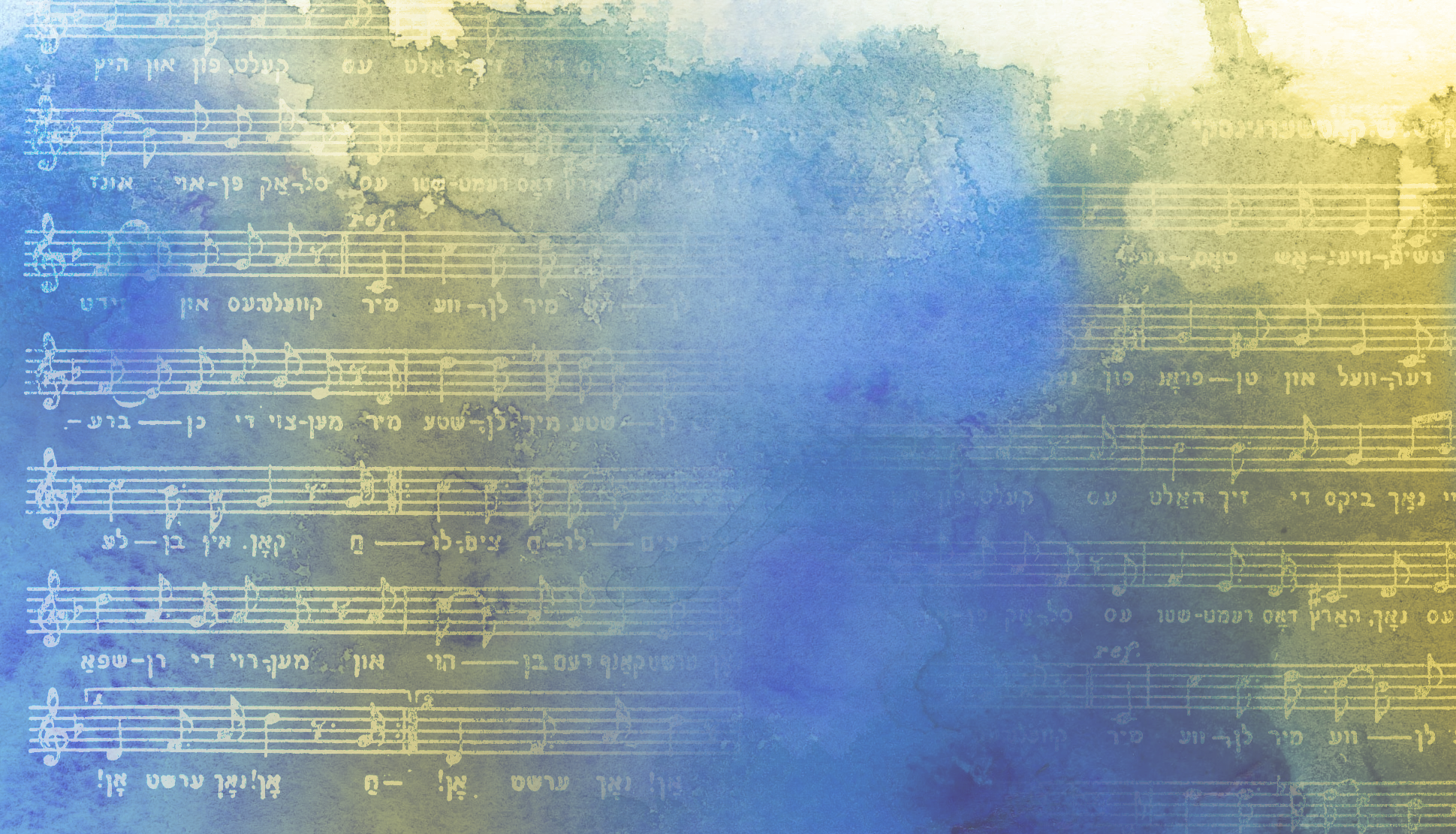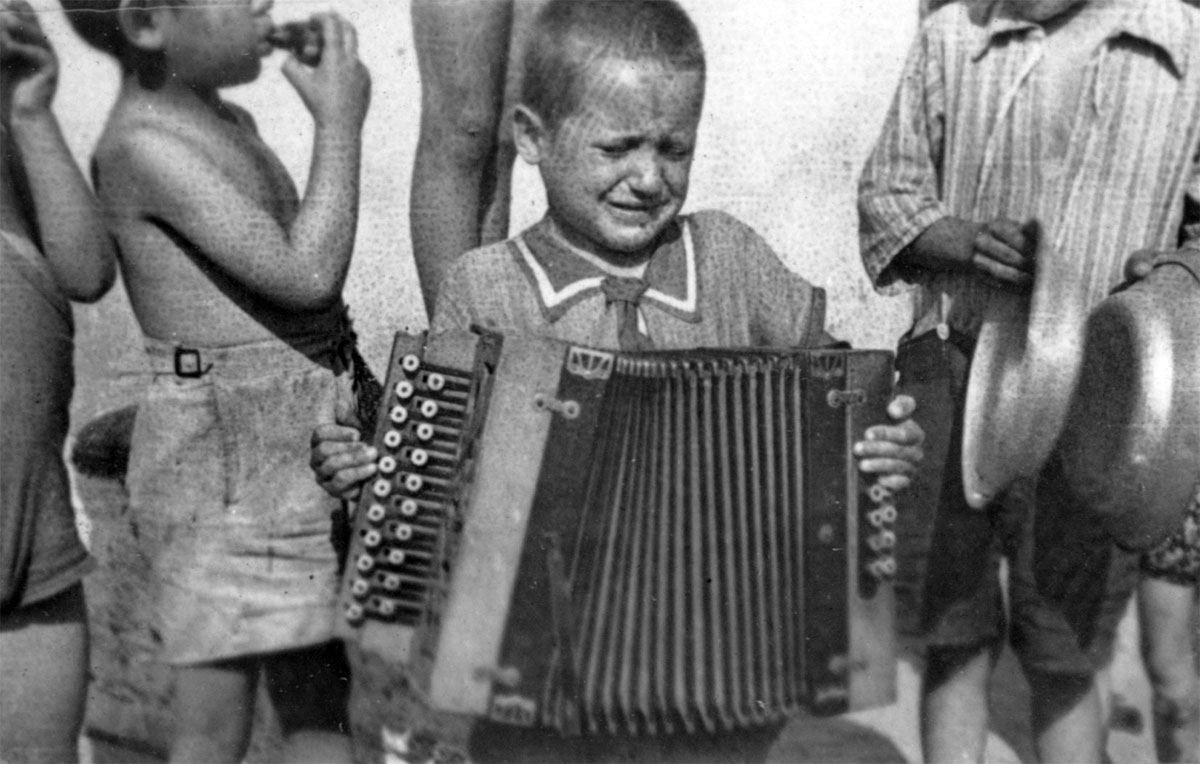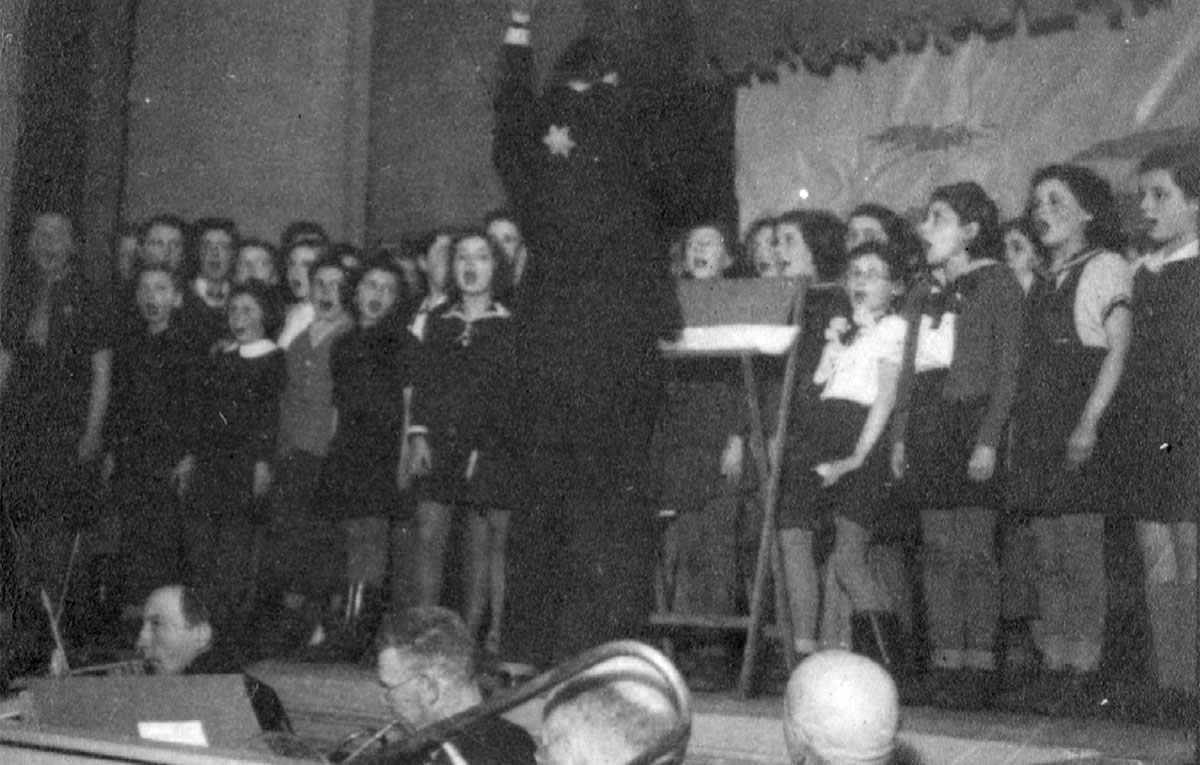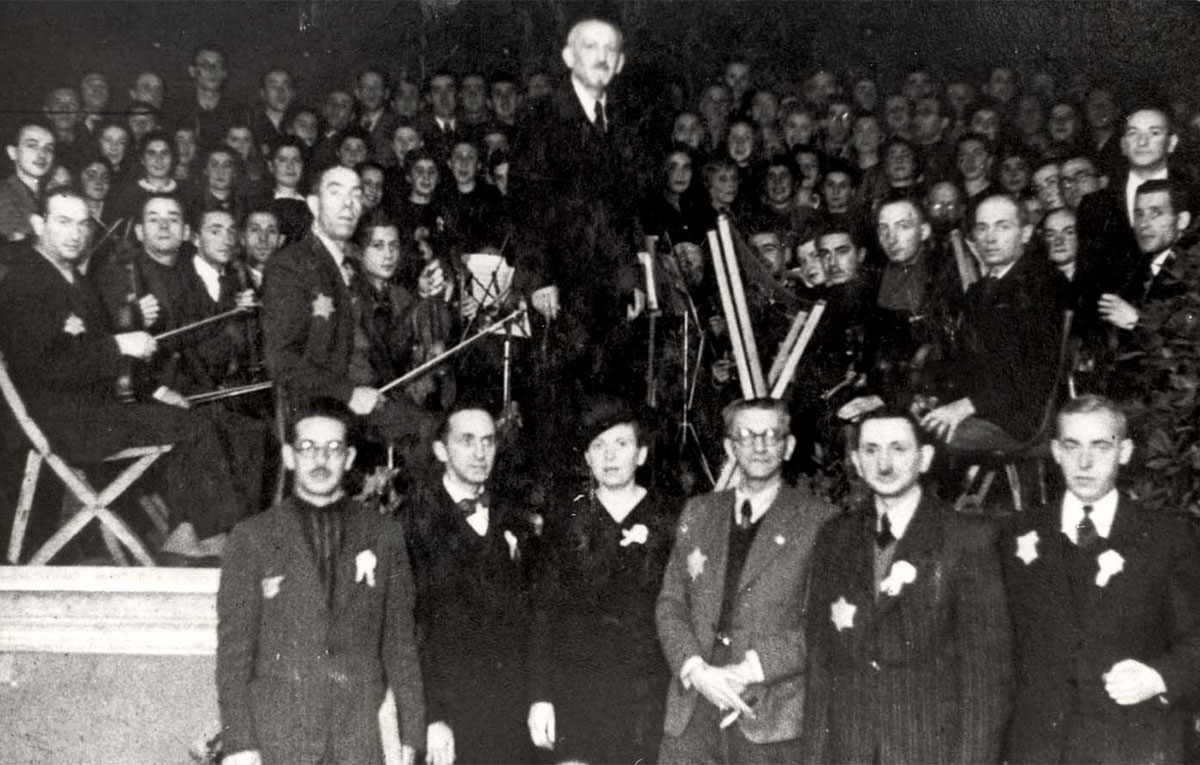Songs of the Lodz Ghetto
The Lodz Ghetto
The Lodz ghetto was established in spring of 1940. In the second year of its existence, the Germans also began to move Jews from Western Europe there. In addition, 5,000 Roma from Austria were deported to the Lodz ghetto in November 1941. Over 200,000 people were interned in the ghetto, which was the last to be liquidated in the summer of 1944. When the Red Army liberated the ghetto in January 1945, the soldiers found some 800 surviving Jews, who had been left behind by the Nazis to clear the site.
The Lodz ghetto became a large labor camp with workshops and factories. Hunger, overcrowding and lack of sanitation caused the spread of epidemics, mainly typhus. The ghetto inhabitants had no contact with the outside world, the local population was hostile, and all means of communication with the outside world were forbidden.
The ghetto administration was concentrated in two branches of German local authority: the political and police forces, and the administrative and economic division which was chiefly concentrated in the municipality of Lodz. The city municipality was supposed to make the ghetto productive and aimed to put the ghetto labor force to work. The head of the Ghetto Administration was Hans Biebow. Within the ghetto, there was the internal Jewish administration, the Jewish council, which was created by an order of the German authorities. The Jewish Council was established prior to the ghetto and was responsible for transporting the Jewish population from all districts of Lodz to the ghetto, to find housing for them, and later to provide some form of social and cultural life. Some of the members of the council were murdered and the administration of the ghetto primarily fell upon the “Elder of the Jews”, the head of the council, Mordechai Chaim Rumkowski. The Germans appointed Rumkowski on October 13, 1939, and he in essence ran the ghetto and was the head of the Judenrat known locally as the “Beirat”. The other members of the Beirat did not fill administrative possess, serving instead as advisors to Rumkowski.
It is important to note that contact with the outside world, including the introduction of food into the ghetto, was under German control, which was at that time handled by the Department of Food Supply and Economics headed by Hans Biebow. The isolation was compounded by the removal of telephones from private homes and the confiscation of radios. Mail was undependable and censored.
On 7 December 1941, the first Nazi death camp in Chelmno began operating. The first victims were Jews from several towns near Lodz, the entire "Gypsy camp" from the Lodz ghetto, and Jewish ghetto inmates. Between January and May 1942, around 55,000 Jews from the Lodz ghetto were murdered - about a third of its population. During the so-called "Sperre", a curfew imposed from 5 to 12 September 1942, over 20,000 ghetto inmates, children, the sick and the elderly, were sent to the Chelmno death camp. After the deportations of late 1942, the ghetto was run as a labor camp; the ghetto’s industry had proven beneficial to the Nazi war machine, and supervision over the ghetto was tightened.
In 1944, however, the Germans decided to liquidate the ghetto, and Himmler instructed Arthur Greiser, the Nazi chief of the Warthegau (western areas of Poland annexed to the Reich) to deport the Jews of Lodz to Chelmno and Auschwitz. The liquidation of the ghetto was completed in the summer of 1944. Rumkowski and his family were deported to Auschwitz together with the other inhabitants of the ghetto. 800 Jews were left behind in the ghetto in order to clean it and 8 mass graves were prepared for them. However, the Nazis did not manage to murder before the arrival of the Soviet army and the liberation of the ghetto in January 1945.
Cultural Life in the Lodz Ghetto
Cultural activities in the Lodz Ghetto were another chapter, in modified form due to the oppressive historical context, in the artistic life of Polish Jewry since their settling there in the 13th century. Individual performers and organized performances were like bread and potatoes for the inhabitants of the ghetto. Concerts and theater shows were given at the “House of Culture” established by Rumkowski. In most of the concert programs given, the majority of works had Jewish overtones. David Beyglman (1887-1944), he regular conductor of these programs, also composed some pieces in the ghetto. The House of Culture contained four hundred seats, and had professional stage equipment, lighting, and so on. In addition to hosting the ghetto’s symphony orchestra, the hall provided a venue for the Lodz Ghetto Choral Society Hazamir as well as the Revue Theater. Rumkowski and his assistants were present at most of the shows, and censored some songs and sketches they found too critical.
Moshe Pulaver was the director of the theater group. Eighty five shows were produced in the House of culture from its opening until the end of 1941, with more than seventy thousand people attending the performances. The House of Culture was officially closed in the summer of 1942 and set up to be a factory for blankets and pillows.
In addition to the theater, there were performances at the different youth organization clubs that operated in Marysin, the green area of the ghetto, until the end of 1942. In addition, child and adult street entertainers expressed the struggle and suffering of the daily life in the ghetto. Out of the many street performers in the ghetto, one is permanently embedded in the memory of the survivors of the ghetto: Yankele Hershkowitz. Survivors recorded Hershkowitz’s songs after the war (some are presented in this exhibition). The street singers were a traveling cabaret, offering social and political satire, humor and parodies of popular songs in response to the daily life in the ghetto. The performers sang for an audience hungry not only for food but also for freedom of expression.
The Jewish authorities also censored these performances, and they ceased at the end of 1942. After the mass deportation of September 1942, the singers, including Yankele Hershkowitz, could not remain on the streets, as no one could “pay” them in food or listen to them because the ghetto had been converted into a large and productive factory. Hershkowitz continued to perform in the factory where he found work.
Amateur Stage at the workplace was a common event especially after the closure of the theater and the end of street performances, when the remaining artists were part of the workforce. These performances continued until June 1943, when Rumkowski decreed that there would be no more performances because he saw them as a threat to his authority.
Throughout the history of the ghetto, artistic creativity continued in domestic and other private settings. Poetry reading, recitations, dance performances, singing and prayer served as expressions of one’s spiritual freedom in the ghetto.
The songs of the Lodz Ghetto that were recorded by the Historical Committee, directed by Shmerke Kaczerginski, come mainly from street singers and the Lodz Ghetto Theater. The songs tell the story of life in the Lodz Ghetto in words and melody and bridge the past and the present with a hope for a better future.
Kaczerginski did not publish the works included in this exhibition in his book and did not become part of the repertoire of Holocaust memorial songs. The songs of the Lodz ghetto, primarily the street songs of the ghetto, were researched by Dr. Gila Flam and some have been reworked by contemporary musicians.





